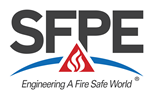FEMTC 2011
Evaluating the Predictive Capability of Fire and Egress Models 
Rick Peacock - National Institute of Standards and Technology
Abstract
Both domestically and worldwide, risk-informed and performance-based analyses are being introduced into fire protection engineering practice. One key tool needed to support performance-based design in fire protection is the availability of verified and validated (V&V) fire models that can reliably predict the consequences of fires. Code requirements from the National Fire Protection Association (NFPA)1,2, the International Code Council3 and the International Maritime Organization4 all acknowledge the need to understand the limitations of computer models applied to building design. For example, NFPA 5000 requires that the methods used to judge performance be shown to be valid and appropriate for the proposed use, including the impact of uncertainty on design calculations. NFPA 805 also includes provisions for models to be verified and validated for application to nuclear power plants. Both fire models and building egress models can follow a similar process of evaluation of their predictive capability for a given application of interest including a review of the completeness of documentation of the model, verification that the theoretical model matches its numerical implementation, and validation of predictions against standard tests, full-scale experiments, field experience, published literature, or previously evaluated models to quantify the level of accuracy of the model for its intended application. An overview of the similarities and differences between the application of processes for verification and validation of fire and egress models is presented with examples from both. Data needs for both types of models are extensive and not always available. Standardization of the process of the evaluation is an active topic in both ASTM and ISO. The result shows areas where improvements can be made in the models and the process of V&V, but it also highlights where we should have confidence and where we should have concerns when using the current generation of fire and egress models.
Presentation
Resources
| Paper | Presentation | ||
|---|---|---|---|
| HTML | HTML | ||
| Resources Archive File (.zip) | |||

